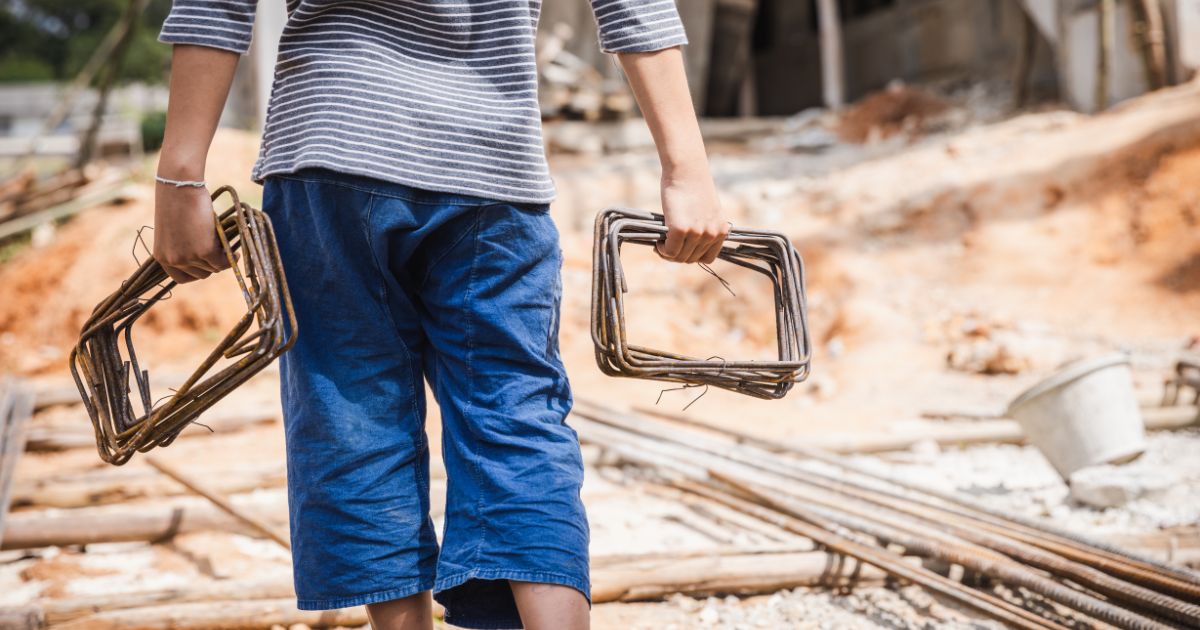Ending Child Exploitation
Child labour is a global issue that affects millions of children worldwide, but what can we do to stop it? World Day Against Child Labour is an annual event held on June 12th to raise awareness about the millions of children around the world who are engaged in work that erases them of their childhood, potential and dignity.
This important day was established by the International Labour Organization (ILO) in 2002 to bring global attention to child labourer’s Difficulties and advocate for their rights.
What is Child Labour?
Child labour is defined as work that is mentally, physically, socially, or morally dangerous and harmful to children and that interferes with their schooling. According to the ILO, there are 152 million children aged 5-17 years old engaged in child labour worldwide, with the majority (88%) working in the agricultural sector.
Some of the lowest forms of child labor include-
- The Slave Trade, trafficking, and debt bondage
- Forced labour, including forced recruitment for armed fight
- Prostitution, pornography and illegal activities
- Harmful work that puts in danger a child’s physical, mental or moral well-being
Why is World Day Against Child Labour Important?
So, why is this day so crucial? First and foremost, it shines a light on an issue that often goes unnoticed. Many people are unaware of the extent of child labour and the severe impact it has on children’s lives.
Raising awareness can inspire action and support for policies and programs that eliminate child labour. Additionally, it serves as a reminder to governments, businesses, and individuals about their role in protecting children’s rights.
Global Efforts to End Child Labour
Over the past two decades, significant progress has been made in the fight against child labour. The ILO’s Minimum Age Convention (No. 138) and the poorest Forms of Child Labour Convention (No. 182) have been widely ratified, and many countries have strengthened their laws and policies to protect children.
However, much more needs to be done. The global target of eliminating all forms of child labour by 2025 is still a long way off. On World Day Against Child Labour, the ILO is calling for urgent action to:
- Increase investment in quality education and social protection
- Strengthen legal protections and enforcement mechanisms
- Promote decent work for parents and youth of legal working age
- Address the root causes of child labour, such as poverty and discrimination.

What Can You Do?
As individuals, we all have a role to play in ending child labour.
Here are some ways you can get Participants-
- Learn more about child labour and its causes and consequences
- Support governments that work to protect children’s rights
- Advocate for stronger laws and policies to shelter children
- Make ethical consumer choices and avoid products made with child labour
- Spread awareness on social media using the hashtag “End Child Labour.”
Together, we can build a world where every child can learn, grow, and succeed. Let’s make World Day Against Child Labour a day of action and solidarity for children’s rights.
How Can We Help End Child Labour?
There are several ways we can contribute to ending child labour.
- Support Education – Education is one of the most effective tools in combating child labour. By ensuring that all children have access to quality education, we can break the cycle of poverty and exploitation. Supporting organizations that build schools and provide educational resources is a great way to make a difference.
- Raise Awareness – Discussing child labour and its effects can help spread awareness. Sharing information on social media, participating in community events, and educating others about the issue can amplify the message and encourage more people to take action.
- Support Fair Trade – When you buy products labelled as fair trade, you support businesses that adhere to ethical practices, including prohibiting child labour. It helps eliminate child labour and promotes fair wages and safe adult working conditions.
- Advocate for Stronger Laws – Pushing for stronger laws and regulations that protect children from exploitation is crucial. It includes advocating for better enforcement of existing laws and supporting new legislation to eradicate child labour statistics.
Real Stories: The Impact of Child Labour
Moreover, Understanding the impact of child labour often comes from hearing the stories of those affected. For instance, many children work long hours in dangerous conditions, missing out on the chance to go to school and play with friends. Infect: These experiences can affect their physical and mental health. Therefore, listening to and sharing these stories is essential to emphasize the issue’s urgency.
Conclusion
In conclusion, World Day Against Child Labour is a vital day for raising awareness and inspiring action to end child labour. By understanding what child labour is, why it’s a significant issue, and how we can help, we can all play a part in creating a world where every child can enjoy a safe and happy childhood. Let’s use this day to educate ourselves and others, support fair practices and advocate for stronger protections for children.